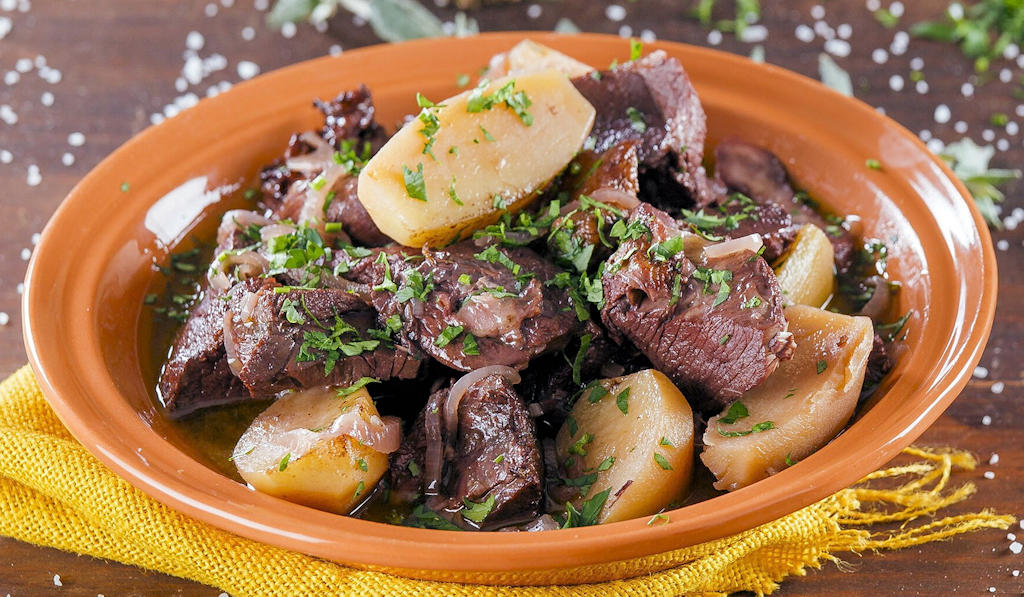As with many traditional recipes, the origin of Chanfana remains shrouded in folklore and legends, each tale painting a vivid picture of its birth. One popular story traces its roots to the tumultuous Peninsular War, when French troops invaded Portugal and occupied Coimbra from 1807 to 1814. In a display of resilience and resourcefulness, the locals hid their valuables and livestock from the invaders, leaving behind only the tough and aging goats. To transform these seemingly inedible animals into a nourishing meal, they turned to the clay pots and ovens of the spared monasteries. Slow-cooking the meat in wine and fragrant herbs resulted in a dish that not only satisfied hunger but also served as a powerful symbol of resistance and survival.
Another captivating tale involves the ingenious nuns of the Santa Clara convent in Coimbra. During the period of Lent, when pork consumption was forbidden, the resourceful nuns substituted goat meat in their recipes. To overcome the distinctive aroma of the meat, they skillfully incorporated red wine into the cooking process, infusing the dish with a robust flavor and masking any potential objections.
However, the origins of Chanfana may reach even further back in time, preceding the Roman era. The Lusitanian tribes that inhabited the region of Beira Litoral were primarily shepherds, raising goats and sheep for their wool, milk, and meat. These resourceful tribes would cook hearty stews with wine and aromatic herbs, akin to the essence of Chanfana. The linguistic connection is not lost either, as the name Chanfana itself can be traced back to the Latin word "cannafanum", meaning "goat's head". This hypothesis further highlights the deep-rooted connection between the dish and the land from which it emerged.
Lisbon.vip Recommends
To truly savor the essence of Portugal, one must indulge in the tantalizing flavors of Chanfana. Let your taste buds transport you to the streets of Coimbra, where the echoes of history and the aromas of this traditional dish mingle effortlessly. Experience the legacy, the passion, and the centuries-old tradition that have culminated in this extraordinary culinary delight. Chanfana is an invitation to explore the rich tapestry of Portuguese cuisine, a testament to the nation's unwavering dedication to preserving its heritage through every mouthwatering bite.



